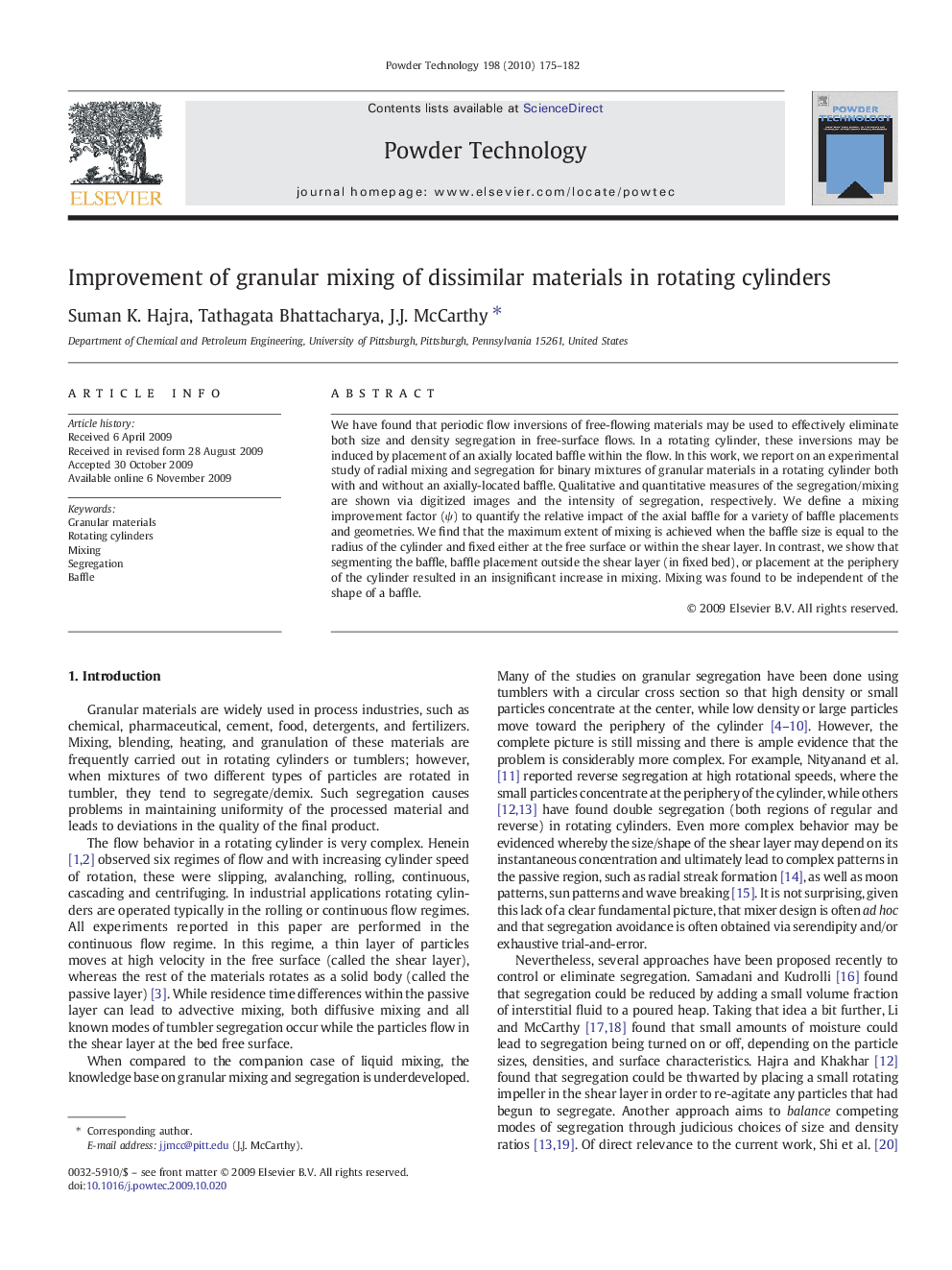| Article ID | Journal | Published Year | Pages | File Type |
|---|---|---|---|---|
| 237963 | Powder Technology | 2010 | 8 Pages |
We have found that periodic flow inversions of free-flowing materials may be used to effectively eliminate both size and density segregation in free-surface flows. In a rotating cylinder, these inversions may be induced by placement of an axially located baffle within the flow. In this work, we report on an experimental study of radial mixing and segregation for binary mixtures of granular materials in a rotating cylinder both with and without an axially-located baffle. Qualitative and quantitative measures of the segregation/mixing are shown via digitized images and the intensity of segregation, respectively. We define a mixing improvement factor (ψ) to quantify the relative impact of the axial baffle for a variety of baffle placements and geometries. We find that the maximum extent of mixing is achieved when the baffle size is equal to the radius of the cylinder and fixed either at the free surface or within the shear layer. In contrast, we show that segmenting the baffle, baffle placement outside the shear layer (in fixed bed), or placement at the periphery of the cylinder resulted in an insignificant increase in mixing. Mixing was found to be independent of the shape of a baffle.
Graphical abstractHere we experimentally explore the impact of various design parameters on the efficacy of centrally-located baffles for limiting segregation in tumbler mixers filled with free-flowing materials.Fig. 1: Experimental tumblers with centrally-located baffles. Surprisingly, the baffle shape makes little difference (top: straight versus S-shaped), while the continuity (bottom right) and central positioning (bottom left) dramatically reduce their effectiveness.Figure optionsDownload full-size imageDownload as PowerPoint slide
